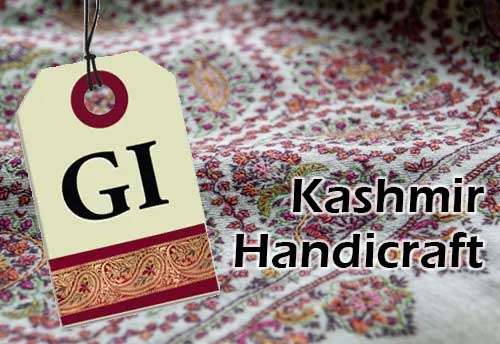Kashmiri handicrafts have long been revered for their exquisite craftsmanship and rich cultural heritage. The Jammu and Kashmir administration has taken a significant step towards empowering the region’s handicraft industry by introducing Geographical Indication (GI) tags for seven Kashmiri handicraft products.
This move complemented by the launch of the Handicraft and Handloom Policy in 2020, is breathing new life into Kashmiri crafts and propelling them onto both national and international stages.
The latest iconic Kashmiri crafts, namely Pashmina, Kashmir Sozni, Kani Shawl, Papier-mache, Kashmiri Crafts, Khatamband, and walnut wood carving have been officially granted Geographical Indication (GI) Tags, which firmly establish their origin in the Kashmir region.
Mahmood Ahmad Shah, Director of Handicrafts and Handloom Kashmir said, “The introduction of GI Tags has been a game-changer for the Kashmiri handicraft industry. It has provided a valuable means to safeguard traditional craftsmanship from counterfeiting, while also raising awareness about the rich cultural heritage of the region.”
Besides that, the GI registration process for five additional crafts, namely Kashmir Namda, Wagguv, Shikara, Gabba, and Kashmir Willow Bat, is currently underway. The documentation for GI certification for these crafts was submitted to the GI authorities in Chennai early this year. While talking to ANI, Mahmood Ahmad Shah said that the registration is in its final stage.
The Geographical Indication (GI) tag is a powerful intellectual property protection tool that ensures the uniqueness and origin of certain products. It empowers artisans and craftsmen to preserve traditional knowledge, skills, and techniques passed down through generations.
This prestigious recognition enhances the marketability and authenticity of these crafts, protecting them from imitation and promoting the livelihoods of the artisans who preserve these unique techniques.
This acknowledgement has opened up new avenues for international trade and has allowed the artisans to showcase their skills and products on a global platform, contributing to the region’s economic growth and social development.
Artisans deeply rooted in these time-honoured traditions are now experiencing substantial benefits from the Handicraft and Handloom Policy 2020 and the GI Tags.
Moreover, the Handicraft and Handloom Policy 2020 has complemented the impact of GI Tags, providing much-needed financial assistance, skill development programs, and market linkages to the artisans.
The policy’s comprehensive support has encouraged the younger generation to take an interest in these traditional crafts, ensuring their continuity for future generations.
The combined effect of the Geographical Indication Tags and the Handicraft and Handloom Policy has been a resurgence of the Kashmiri handicraft sector. Artisans, who were once struggling to make ends meet, now find their crafts in high demand not only within the country but also in international markets.
This economic upliftment has not only improved their standard of living but has also preserved the unique cultural identity of the Kashmir region.
Implementing GI tags on seven Kashmiri handicraft products, coupled with the Handicraft and Handloom Policy, has ushered in a new era for these traditional crafts. The recognition and protection provided by GI tags have helped preserve the cultural heritage of Kashmir, while the policy initiatives have empowered artisans and boosted the local economy. This dual approach has propelled Kashmiri handicrafts onto both national and international stages, securing their legacy for generations to come.
The introduction of Geographical Indication tags and the implementation of Handicraft and Handloom Policy in 2020 has been crucial in revitalizing the handicraft industry in Jammu and Kashmir.
By securing the authenticity of traditional crafts and providing comprehensive support to artisans, the administration has created a thriving ecosystem that celebrates the artistry and cultural heritage of the region on a global stage. As these initiatives continue to bear fruit, they will undoubtedly leave a lasting impact on the economic and social fabric of the region for years to come.
The amalgamation of GI tags and the Handicraft and Handloom Policy has catapulted Kashmiri handicrafts into the international spotlight. These products are now sought after by discerning customers worldwide and appreciating the intricacy and artistry of these unique crafts. Exhibitions and trade fairs have become platforms for artisans to showcase their skills, fostering collaborations with international designers and brands.

